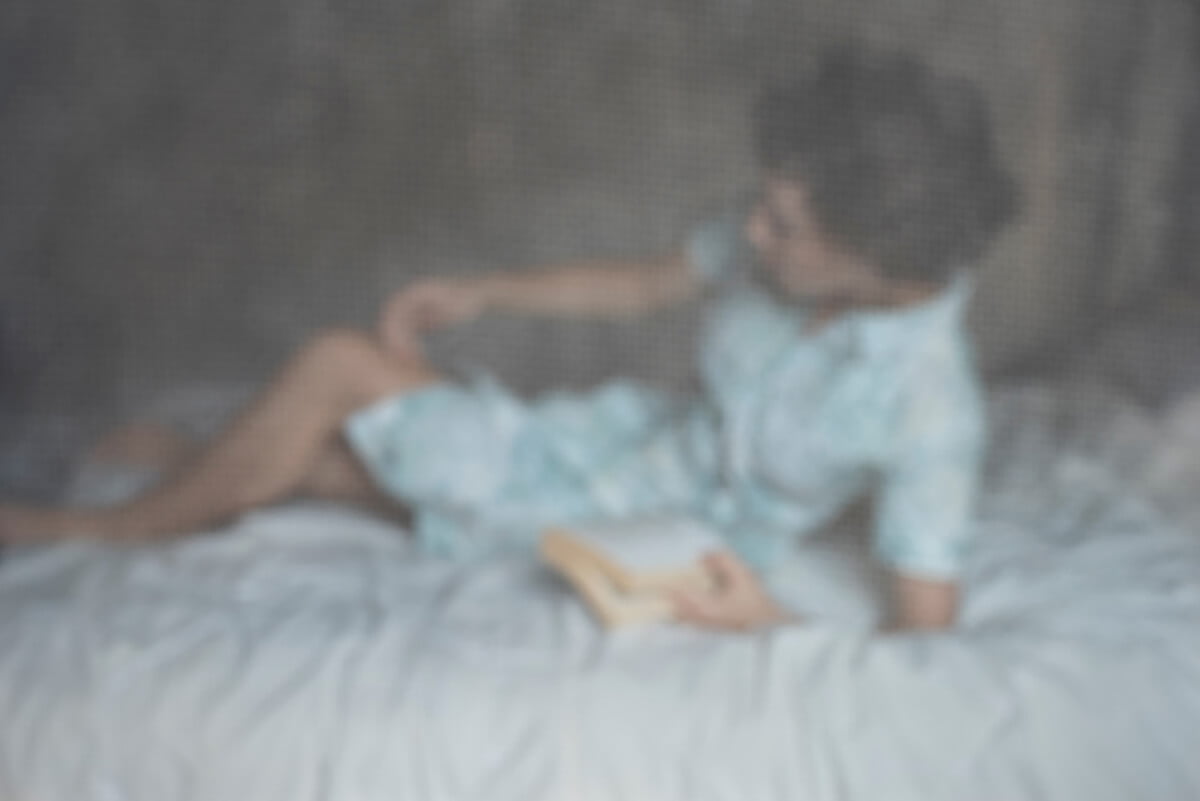INTERVIEW
The Quest for Self
WITH ANNE-CLAIRE VIMAL DU MONTEIL
An interview with Anne-Claire Vimal Du Monteil
“I see infinite potential both when taking the picture and in post-production. Photography is an unlimited creative playground for me.”
Anne-Claire Vimal Du Monteil won our Open Call competition with a stunningly realized image that judge Tsoku Maela said has a beauty that “masks a deeper, less benign story underneath”. Taken from a body of conceptual portraiture exploring ideas of childhood, stereotypes and social biases, it is a story of contradictions, drawing on Anne-Claire’s varied background in art history, philosophy, film and retouching.
Keen to know more, we put some questions to Anne-Claire…
Dear Anne-Claire. Firstly, congratulations on winning our Open Call competition. What did you make of Tsoku Maela’s comments?
I was very touched by Tsoku Maela’s text because he understood exactly what I wanted to convey with my picture. As he said it himself, we can extend the constraints of gendered education to the search of authenticity, who we really are and what defines us as a unique human. It’s hard to be yourself in world that keeps asking what predefined role to play, telling you what you should like or not.
It’s a beautifully realised image, which through layers of meaning examines the pressures placed on young girls by society. Can you tell us a little bit about the image – how the concept was developed and how the final image was achieved?
I have been questioning for a long time the grey zone between education and indoctrination. For example the princess is a stereotype that has being told in fairy tales to generations of children. This is a very significant concept regarding women’s status, and it’s widely popular in mainstream culture. It is everywhere from kindergarten onwards, you can’t avoid it.
I realized my daughter was never sensitive to this stereotype. This is the context that helped my shaping the picture’s concept. I asked my daughter to wear the dress and the crown, to put on a sad face and then to remove the dress in a liberating gesture. The complete series shows the whole liberation process, I kept the strongest ones.
And what’s the significance of the series title “Breathe!”?
There are two meanings behind the title. First, when you have to do something unpleasant, such as a blood test, or when you are stressed out, usually someone tells you to relax, breathe out and everything will be just fine. This “breathe!” is an additional injunction made to the girl to make her accept the princess role she doesn’t want. Then at the same time if you look at the whole series, the girl removes the tightened dress in a liberating move which will allow her to fully breathe. Liberate your true self, breathe and live!
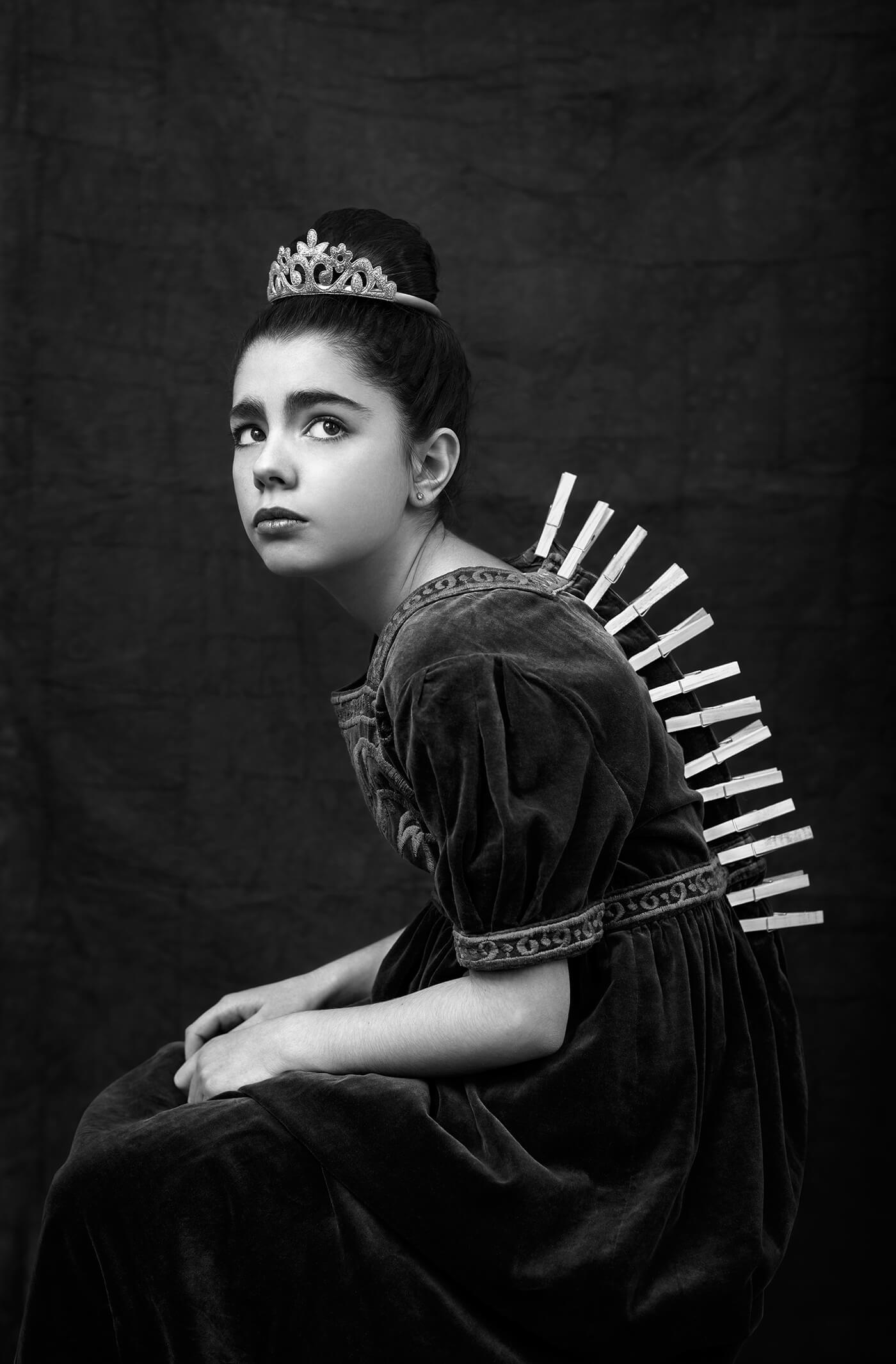
BREATHE! #2 – ANNE CLAIRE’S WINNING IMAGE
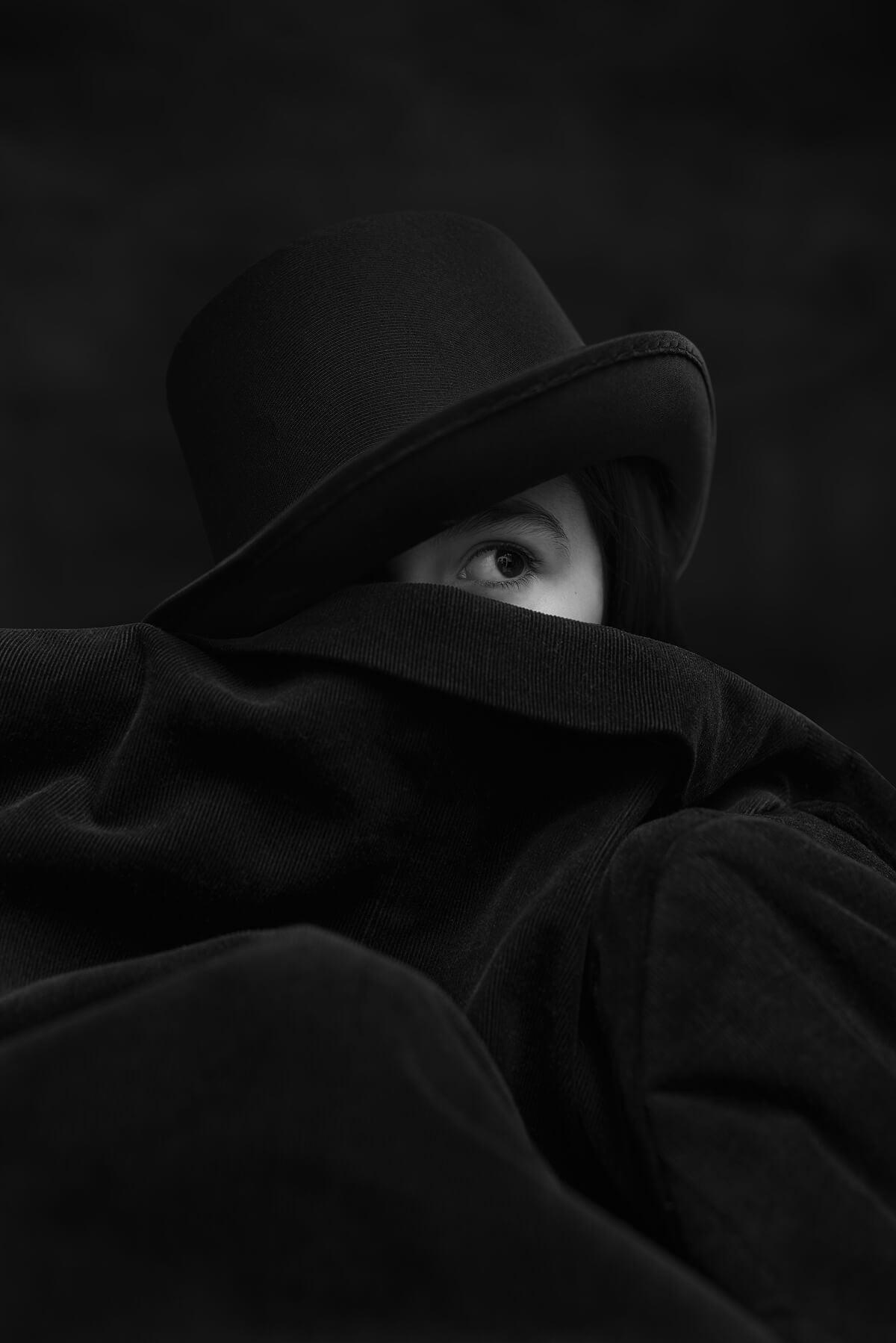
FIVE SENSES #1
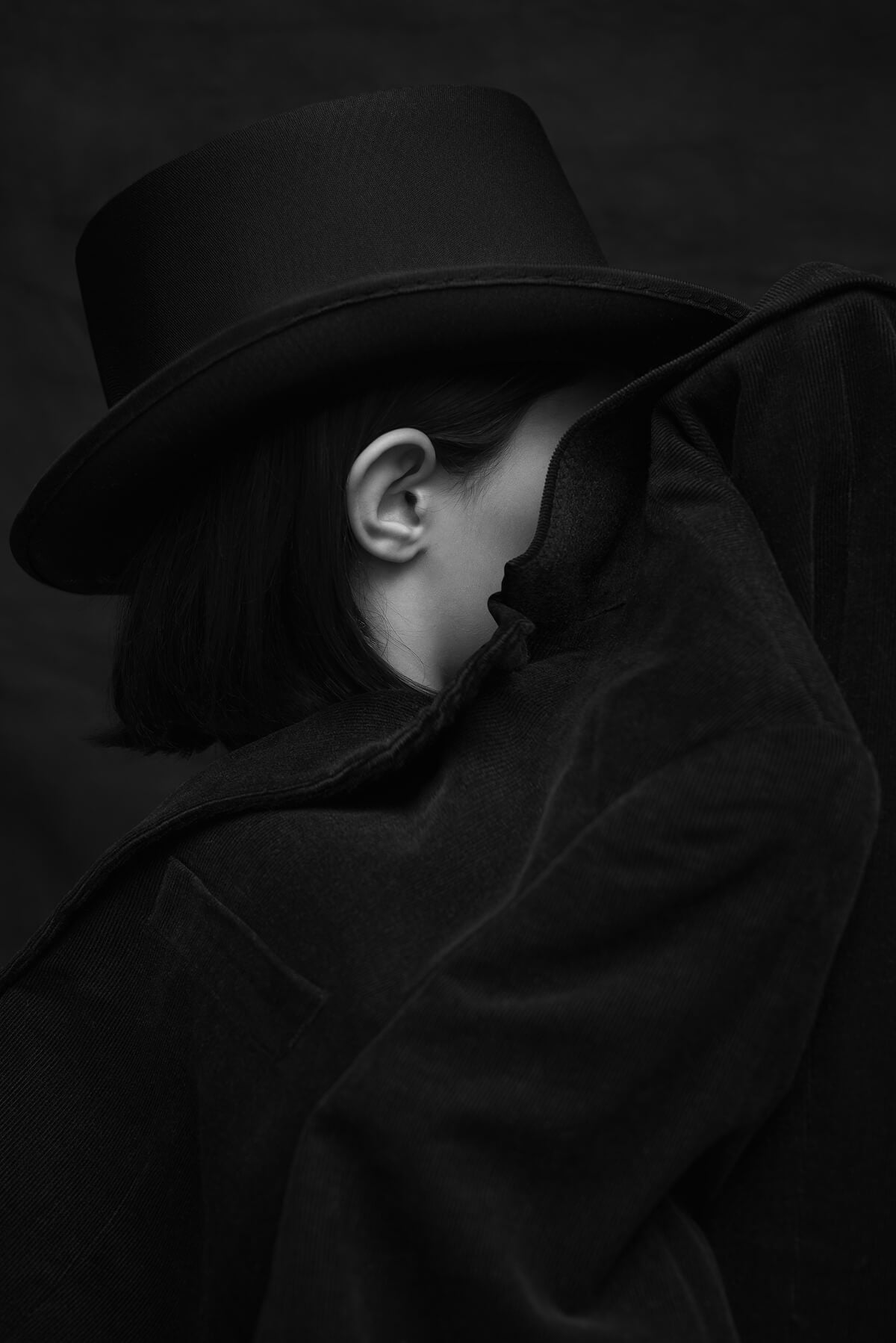
FIVE SENSES #2
Much of your work explores childhood – or uses childhood as a basis from which to explore broader ideas. Why do you think that is? Why the fascination with this subject area?
Childhood is a very important moment of life, where you build your future self. The quest for self is a recurring theme in my work, so childhood is a perfect subject area to explore because it’s so rich. Soul-searching, going back to childhood allow us to understand lots of things, decades after. I am the mother of two daughters. This pushed me to go through the childhood journey again from a different perspective. The interesting thing is that their journey is very different from mine. I did not enjoy my childhood. I grew up in a peaceful and loving family but the outside world always felt like a terrifying place, ruled by injustice and cruelty. I still feel the same today, but my daughters don’t! I am fascinated by how different our own inner worlds can be despite a very similar environment.
Do you have a favorite image from your narrative series? Why that one?
The first picture of the series “The Hand” is very mysterious to me. I have the intuition that it’s related to us destroying our planet, and ourselves ultimately, unless we radically change our behaviour. This picture is quiet and positive, it feels reassuring to me. There’s a connection between the pot, the hand, the girl and the plants around, like if everything unifies together for a brighter future.
I was particularly drawn to your work “Five senses”, and the creative clarity with which you depict each of the senses. Tell us a little bit about this one…
Our body is a vessel to travel through life, our senses are the functions that allow us to connect with the outside world along this journey. This is deeply related to my usual obsessions, the quest for self, education, freedom of thought and freewill. Our senses allow us to ask questions: what do we see? What do we eat? what do we hear? What do we touch? In what ways and why?
Then we filter the inputs through interpretation, social and cultural biases, judgement and hundreds of other parameters. And then some other filters such as mental health or drugs will alter our perceptions and change our emotions and response behaviour. This series is the first to explore this subject area.
You studied cinema, history of art and philosophy, working in cinema and then retouching before becoming a fine art photographer. It’s an interesting background! Do you think it has a direct bearing on your photography? Are there lessons or ideas you take from your training and apply in your fine art work?
All these disciplines deeply inspired me, both in terms of substance and the aesthetic form they take. My narrative series take root in psychological and philosophical themes. They take the form of dreamlike, poetic and symbolic pictures. The difficult search and discovery of identity is one of the recurring tropes of my work.
I am inspired by classical and baroque paintings. For example I used chiaroscuro a lot in my recent narrative series and portraits. This is directly inspired by Caravaggio. My aesthetic research is essentially geared toward deformation and blur poetry. In “Blurred” and “In the bedroom”, I use physical filters (coated glass with various texture and opacity materials, and a window screen) to create blurriness and distortion. Following a pictorialist and impressionist lineage, I am looking for a modern painting style through my photographics work. Feeling and emotion take precedence over the subject’s precise depiction.
Going back to the Five Senses subject, I use a supposed faulty vision, blur, in order to create beauty and poetry. This enables freedom both for me during the creative process and for the people who will discover the picture. Cinematographic staging and composition from painting gives infinite potential of image manipulation both when taking the picture and in post-production. Photography is an unlimited creative playground for me.
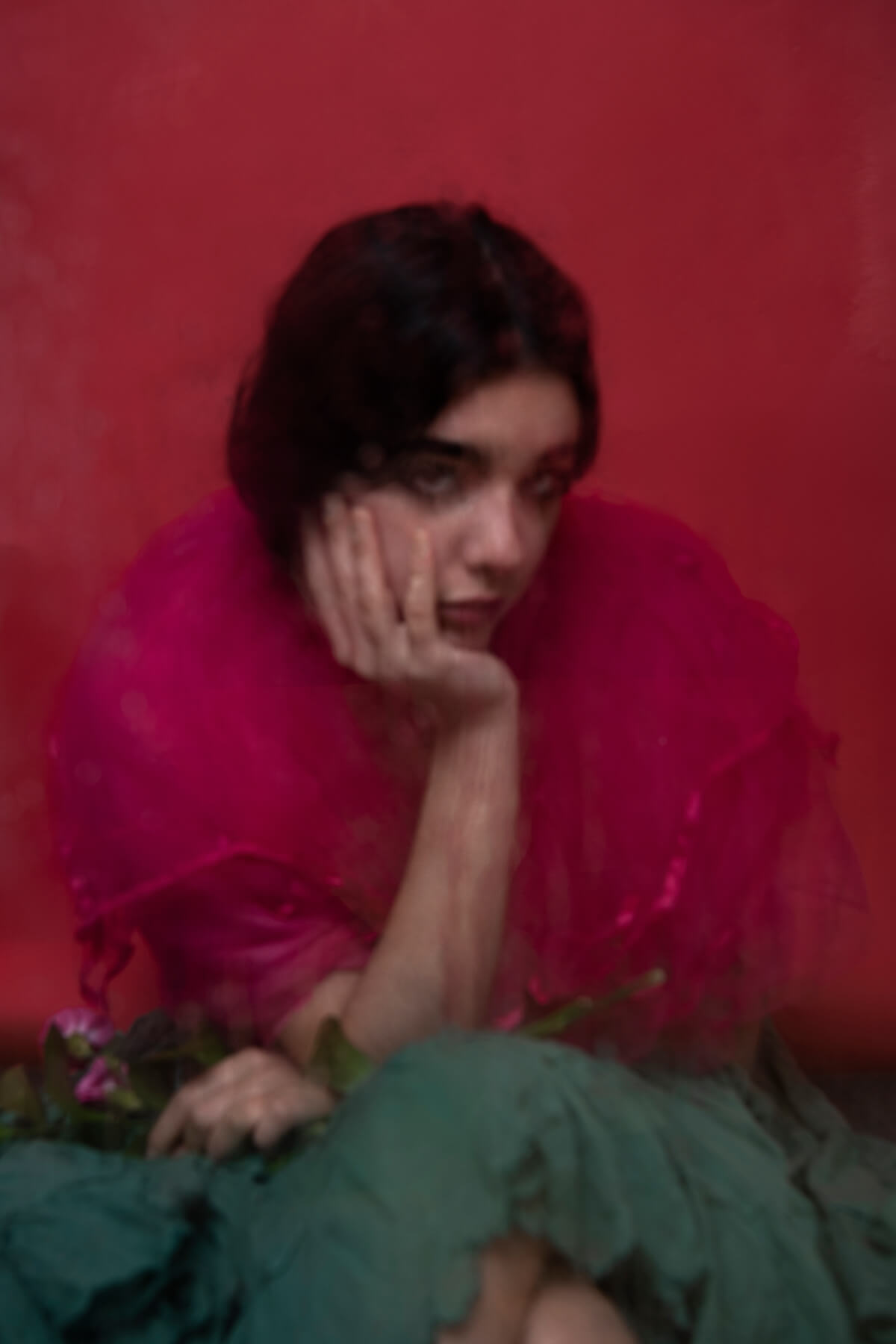
BLURRED #4
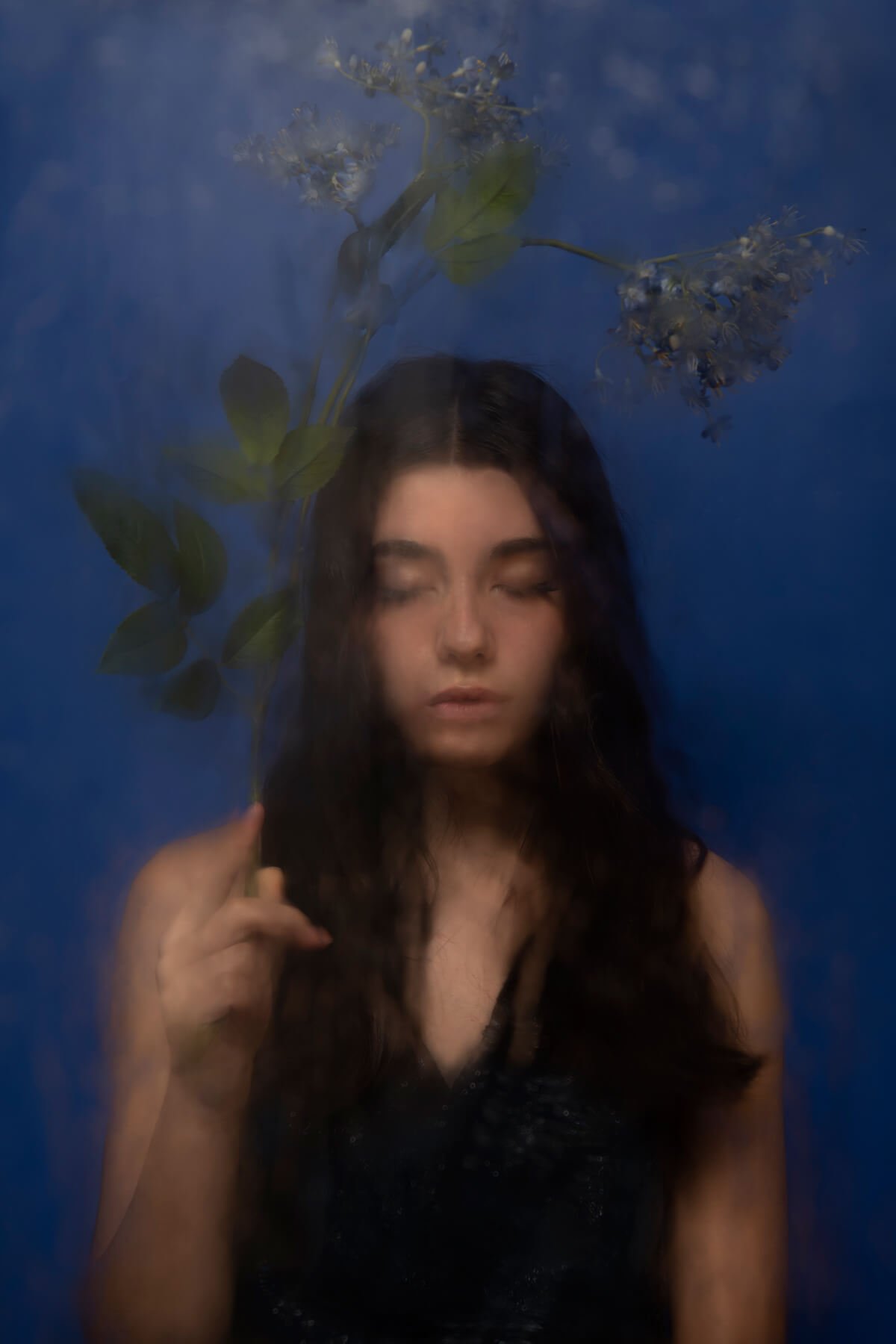
BLURRED #2
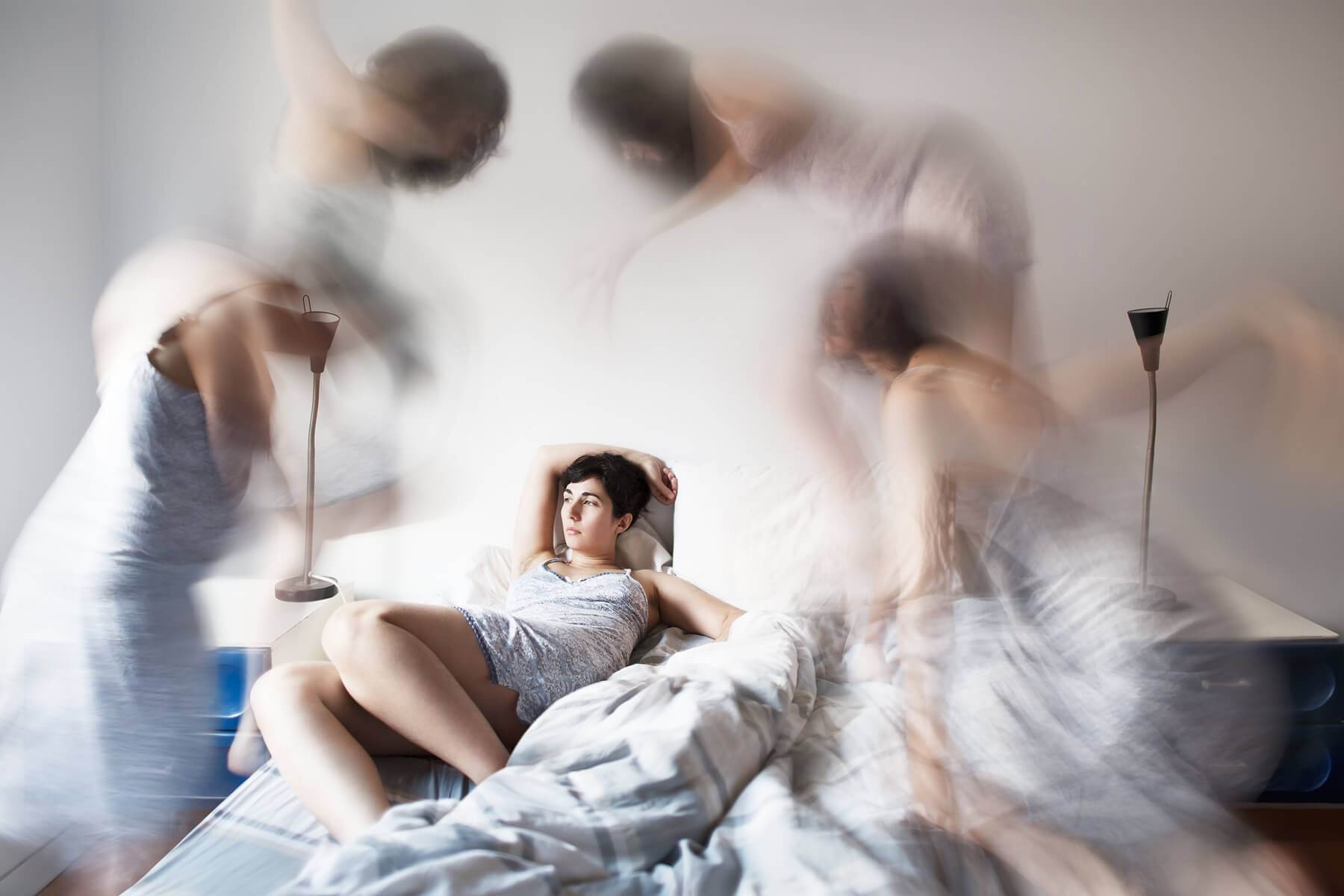
GHOSTS #1
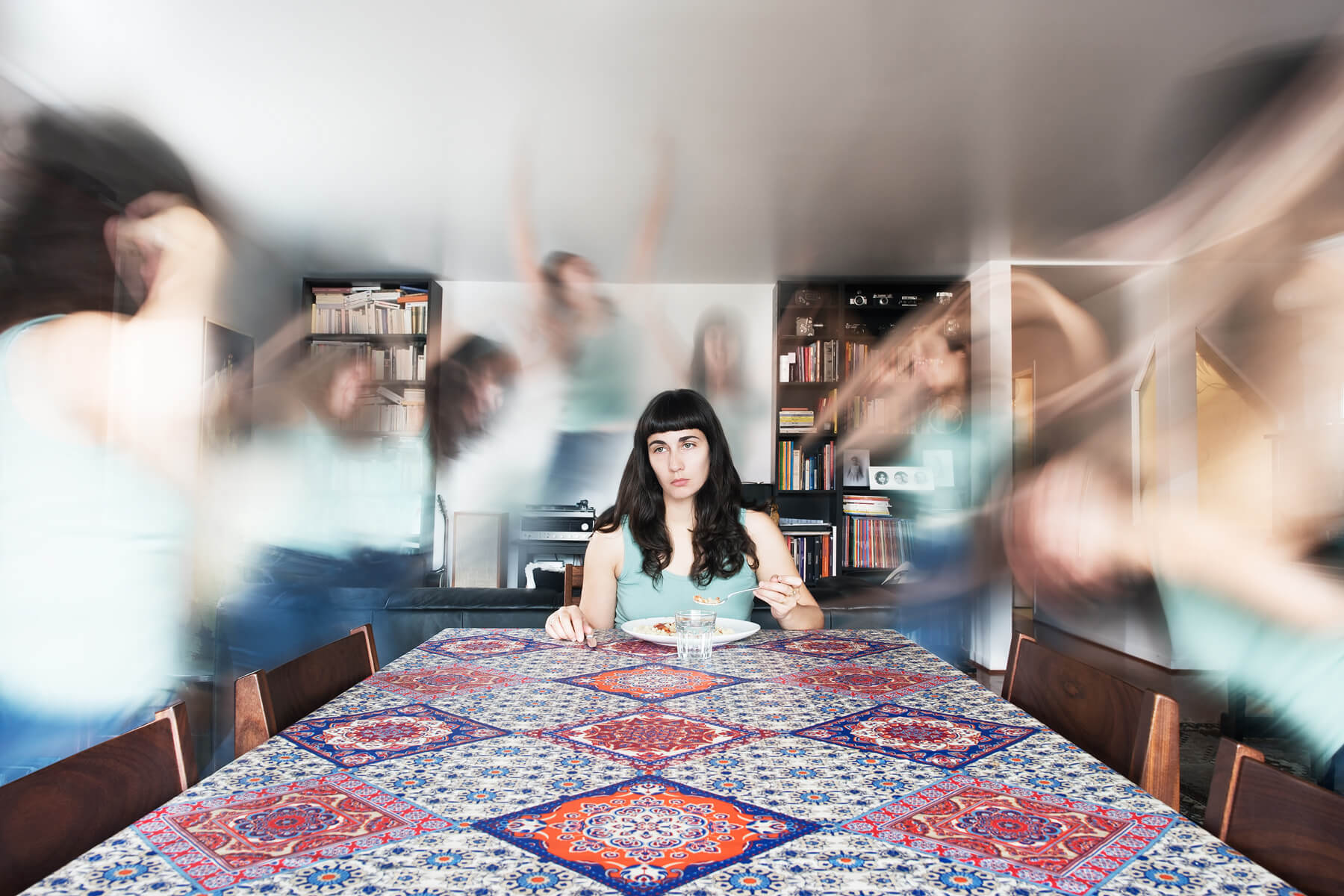
GHOSTS #3
Many photographers might not really understand the role of a retoucher. Can you explain its significance? Do you have certain rules when it comes to retouching your own work?
Retouching is basically modifying the raw digital file. It starts with developing the raw file where you can adjust basic parameters such as colors, contrast, exposure. The photographer then chooses to render what their eye saw or they already can make artistic choices during this first stage. Then retouching can go further with cosmetic changes such as removing elements in order to clarify the composition for picture readability, detailed beauty retouching or creating a specific aesthetic mood.
As a retouching artist, I often say that the file I receive is a rough diamond. I am here to shape it in order to reveal its beauty, its radiance. When someone looks at a picture, they are not supposed to see the retouching works. Retouching must blend with the subject and type of picture. Its purpose is to serve a statement, an objective, a creative intention.
For documentary work, retouching must be basic because the pictures should showcase reality. Creativity and subjectivity should be minimal. On the other hand, artistic pictures which include staging provide infinite retouching potential. Picture compositing is fascinating.
Regarding portraiture, beauty retouching should be as minimal as possible in order to preserve the person’s identity. Digital photography sometimes reveals details that are not visible with the human eye. Then it becomes essential to soften shadows or lighting effects to reveal the true beauty of the character pictured.
You emigrated from Paris to Montreal. What drew you there? And how’s the art scene? Is there a strong fine art community?
I love Montreal! I am an avid museum guest – fine arts, contemporary arts, photography at McCord museum, art galleries. I also enjoy visiting New York and Paris whenever I can – I was recently there at the Maison Europeenne de la Photographie where I discovered Moriyama and Tomatsu works. I also spent an amazing day at Musée d’Orsay with my daughters.
What’s the one photographic lesson you would go back and pass on to your younger self?
Once you know all the basics, forget everything and experiment with all the incredible tools at your disposal, from DSLR or analog shooting to post-production!
And finally, what’s keeping you busy right now Anne-Claire? What can we expect next?
I learned cinema compositing in the past two years, I currently work for a VFX company in Montreal and it’s fascinating! I love exploring new image territories. I have several photographic projects on the backburner that I look forward to sharing.
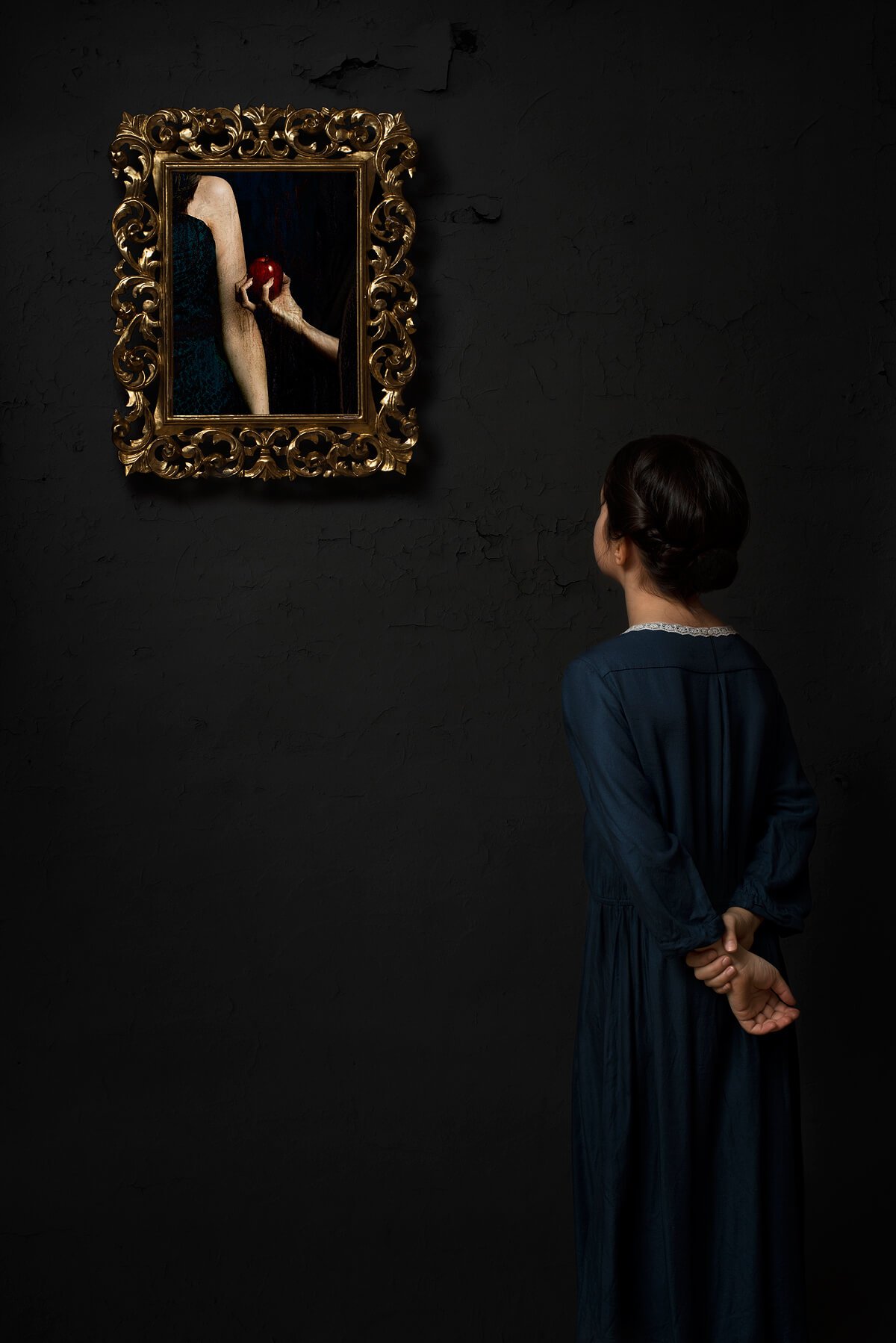
CHILDHOOD #2

CHILDHOOD #3
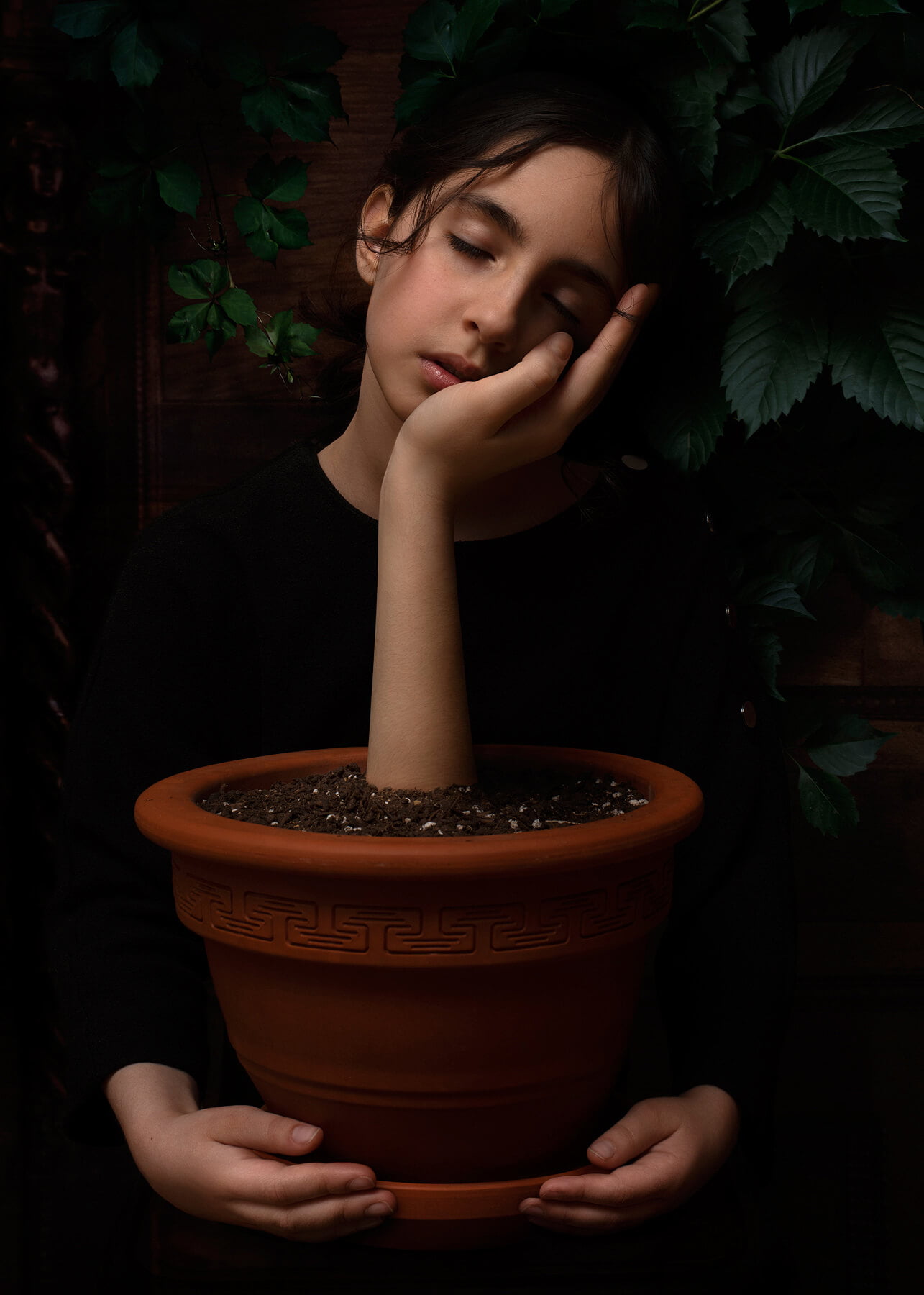
THE HAND
All images © Anne-Claire Vimal Du Monteil
See more at anneclairevdm.cargo.site and on Instagram: @anneclairevimaldumonteil
